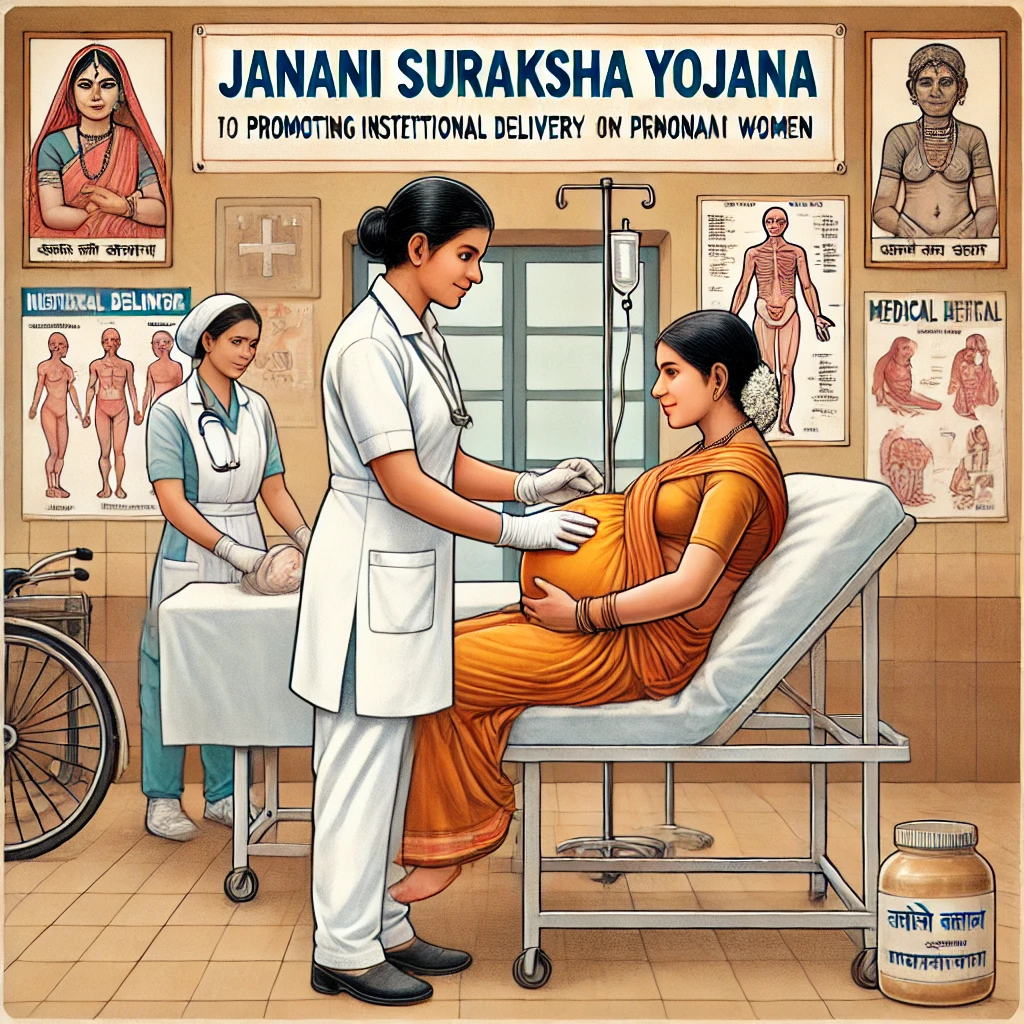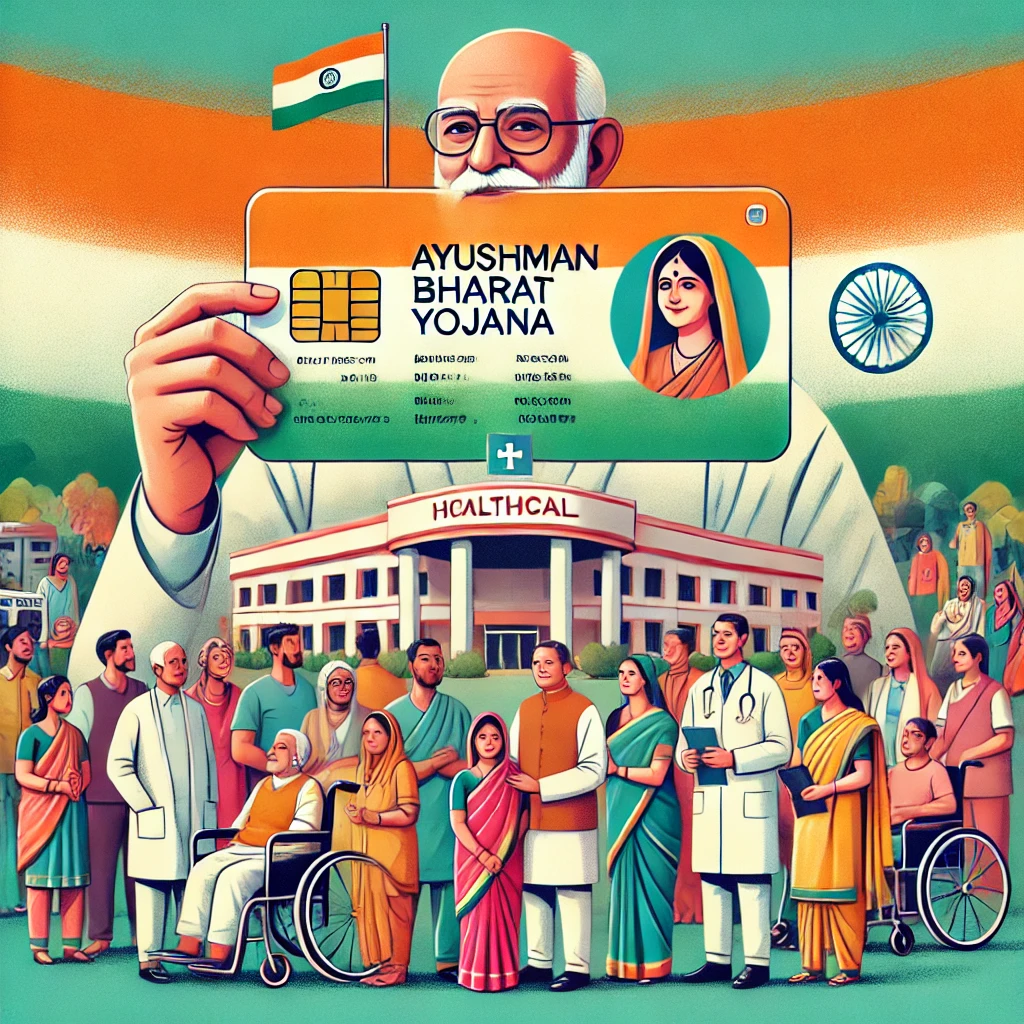The Janani Suraksha Yojana (JSY) is a groundbreaking initiative launched by the Government of India, aimed at reducing maternal and neonatal mortality rates by promoting institutional delivery among poor pregnant women. Introduced under the National Rural Health Mission (NRHM), this scheme has played a crucial role in enhancing the healthcare facilities for mothers and newborns across India. Here are key highlights about the program:
- Focus: Enhances safe motherhood and reduces mortality rates.
- Scope: Targets low-income families across India.
- Benefits: Provides financial assistance and promotes institutional deliveries.

What is Janani Suraksha Yojana (JSY)?
Janani Suraksha Yojana is a government scheme designed to encourage safe childbirth and reduce maternal and infant mortality rates in India. Launched in 2005, it provides financial incentives to pregnant women to give birth in hospitals. The scheme ensures that women, especially from rural and underserved areas, have access to professional medical care during delivery, which is vital for the health of the mother and the child.
Vision of the JSY
The vision of Janani Suraksha Yojana is to provide a safer environment for pregnant women during childbirth and immediately after that. It aims to:
- Reduce maternal and infant mortality rates significantly.
- Ensure that deliveries are conducted by skilled health professionals in a sanitized environment.
- Make healthcare accessible to all sections of society, particularly the marginalized.
Features of Janani Suraksha Yojana
Key Components
- Cash Assistance: Financial aid is provided to mothers on the condition of hospital delivery.
- Scale of Coverage: It covers all states and union territories, focusing on Low Performing States (LPS) where the maternal mortality rate is especially high.
Accessibility
- The scheme is available to all pregnant women below the poverty line, with special provisions for those in rural and remote areas.
Janani Suraksha Yojana Objectives
The Janani Suraksha Yojana (JSY) is designed with clear and focused objectives to improve maternal and infant health outcomes across India. One of the primary goals of JSY is to reduce maternal and neonatal mortality rates by encouraging institutional deliveries, especially among the poorest and most vulnerable sections of society. The scheme promotes the use of professional healthcare facilities during childbirth, which significantly mitigates the risks associated with delivery complications that can lead to fatalities.
Another vital objective of JSY is to enhance access to healthcare during pregnancy, delivery, and postnatal periods. By providing financial incentives to pregnant women, the scheme ensures that financial constraints do not prevent women from seeking hospital births. This incentive also covers transportation costs, making it easier for women from remote areas to reach healthcare facilities in time for delivery.
Overall, JSY aims to create a more inclusive healthcare environment, where every pregnant woman has the right to safe childbirth and effective medical care, regardless of her economic status. This initiative not only contributes to healthier mothers and infants but also fosters a stronger healthcare system in India. The primary objectives of the Janani Suraksha Yojana include:
- Promoting institutional deliveries among poor pregnant women.
- Reducing maternal and neonatal mortality rates by facilitating timely and professional medical intervention.
- Increasing awareness of maternal and child health services.
Target Groups of Janani Suraksha Yojana
Janani Suraksha Yojana specifically targets:
- Pregnant women who are below the poverty line.
- Residents of rural or underserved areas, particularly in states with high maternal mortality rates.
- Women from scheduled castes and tribes, ensuring equitable access to healthcare facilities.
Benefits of Janani Suraksha Yojana
Financial and Healthcare Benefits
- Monetary Incentive: A sum of money is provided to cover transportation and other costs associated with hospital delivery.
- Healthcare Access: Ensures that pregnant women receive professional medical care during delivery.
Long-term Impact
- Reduced Mortality Rates: By promoting institutional deliveries, the scheme helps in reducing complications during childbirth, which can lead to fatalities.
- Improved Overall Health: Access to hospitals and professional healthcare workers leads to better health outcomes for both mother and child.


